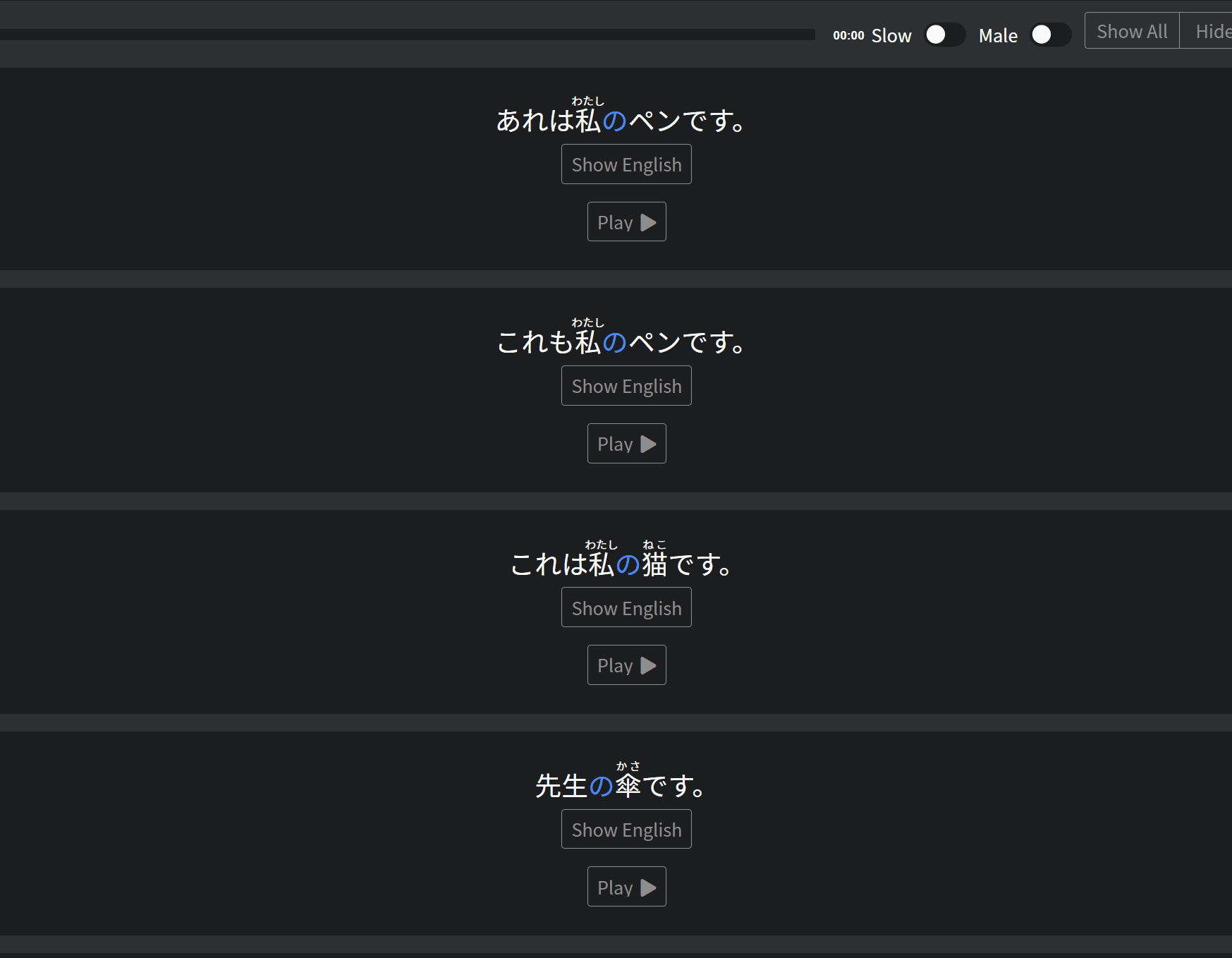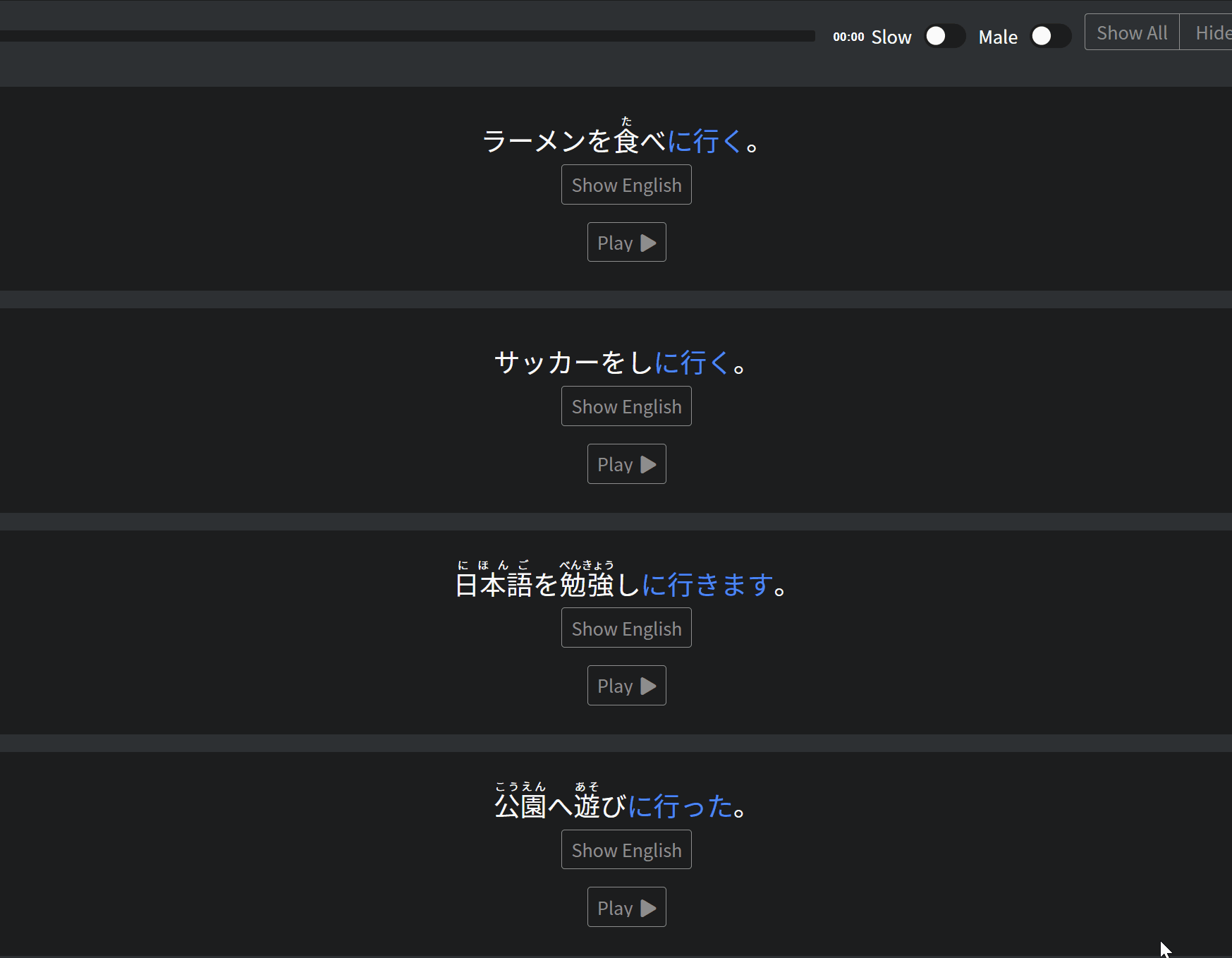Hi Everyone!
Once again we have the great pleasure of introducing a new type of content to Bunpro that we feel will become a major (positive) turning point in the way that you study Japanese.
On top of grammar, one of the biggest challenges involved in learning Japanese (or any language) is vocabulary. Traditionally vocabulary is learned in the following way:
- Come across a word you don’t know,
- Look it up in a dictionary, or by using extensions (breaking your study flow)
- Read the English translation (taking your brain out of Japanese mode)
This style usually results in an very shallow, short term understanding of the word.
We are taking a bit of a different approach. Our solution will not only keep you in your study flow (and your brain in Japanese mode), but will also greatly increase your exposure time, by giving you the opportunity to form the necessary mental links required to create lasting memories about new words.
 Here is how it works
Here is how it works
Every word, in every example sentence, study question, reading passage and grammar writeup will be clickable (many already are!). That’s right… every. single. one.
When you are reading a sentence on Bunpro, there will be times that you will see words that you are not familiar with. We think that, instead of the traditional method, your time is better spent learning the word naturally, through context. Here is an example.
Let’s say that you see this sentence-
・新しい靴より、新しいカバンの方がほしい。
Maybe this is your first time seeing the adjective 新しい, so you click on it (similarly to how you can click on grammar points in sentences currently). You would then be presented with a vocabulary card that includes 8 example sentences. Like this-
・この家は新しいです。
・家族と一緒に新しい年を迎える。
・この学校は新しいので、とても綺麗だ。
・その靴はピカピカなので、きっと新しいだろう。
・その自爆テロ事件はまだ記憶に新しいです。
・二つの国が一つになって新しい国が出来た事をきっかけに、内戦が勃発しました。
・そのウイルスは変異を繰り返し、どんどん新しいウイルスの型を作っています。
・息子についこの間新しい靴を買ってあげたばかりなのに、もう靴がきつくなってしまったらしい。
As you can see, the example sentences progressively get more difficult, and you will be introduced to several different situations in which that word can be used naturally. There are no translations for these sentences but there is a simple English translation of the vocabulary word that will always be hidden by default.
This is to encourage you to try to read the context sentences that utilize that word first, to see if you can guess/infer the meaning of the word through repeated exposure within those sentences (the same thing a native speaker would do when they see a new word).
Here is how we would guess the meaning of 新しい, purely through using the sentences given.
- It’s something that a home can be.
- It’s a type of ‘year’ that you can greet with your family.
- This school is very beautiful for (A) reason.
- These shoes are very shiny, so they must be (A).
- This terrorist attack is still (A) in someone’s memory.
- Because two countries formed one (A) country, it was the trigger for a civil war occurring.
- Because this virus is repeatedly changing, it is constantly making (A) types of viruses.
- Unfortunately, (A) shoes were bought for someone’s son, but it appears that they have already become too tight!
In each sentence, the word ‘new’ fits perfectly, so we can guess quite confidently that the translation must be ‘new’, without ever needing to look at the English word!
Here is what the popout looks like:

Sometimes words can have both grammar and vocab information. This is most common for verbs and adjectives. In such instances, you have access to both depending on what you are looking for.

And here is what things look like on the backend for us, so we can go through sentences and decide what needs to be wrapped as grammar, vocab, or both.
 How does this help my study?
How does this help my study?
When learning new words, one of the most important factors that will determine whether you remember that word or not, is whether you know when to use that word (naturally), rather than simply what the meaning of that word is (in English).
Brains have a tendency to resist new information. While this doesn’t apply to everyone, when our brains learn the English meaning of a Japanese word it could potentially be opposed at first glance, as the brain doesn’t have enough information to truly consider it relevant or correct.
However, by seeing examples, and different nuances, our brains are able to form a web of ‘related situations’ that involve that word, solidifying understanding, and acceptance of that information. 
With just the addition of N5 words, we already have around 9000 new sentences. As you may have guessed, we have been busy the last few months! Once we reach our goal of (around) 20,000 words, combining that with existing and planned expansion of grammar example sentences, we will have roughly 200,000 unique sentences.
- Each written by native speakers.
- Each designed to slowly increase in difficulty.
- Each designed to expose you to natural situations where that word would be used.

 I can’t read the example sentences…
I can’t read the example sentences…
Don’t worry! This is something we have accounted for. The first 2 sentences are always designed to use N5 grammar. The 3rd and 4th sentences are designed to be a little bit longer, and use grammar from the same N-level as that word appears in. The 5th, 6th, 7th, and 8th sentences are where things start to get tricky, but have the most value.
When asking our writers to make these last 4 sentences, we had one request, ‘say what you would say in real life, or hear/read in real news/books’. We want you guys to be exposed to these words in the most natural usages possible.
What this means is that (by the end of N5), there should be at least 2 to 4 sentences in every word card that you will be able to read. 
Even better than that, you will be able to come back to these words in the future as you are SRS’ing them, to test if you can read the more difficult sentences, and learn new nuances. 
 Excuse me my good sir… Did you say SRS?
Excuse me my good sir… Did you say SRS?
Yes we did! We are planning on making decks of cards from N5, all the way through to N1, and beyond. As mentioned previously, we already have over 20,000 words that we will include! (with no limit to what type of words we may add in the future). Naturally, our N-level decks will include words that we have in our grammar sentences on the website.

You can expect to be able to start adding vocab to decks and SRSing it on Bunpro sometime early next year!
 I like to customize my learning, let me make my own decks
I like to customize my learning, let me make my own decks
A feature that we are looking at introducing is user decks. This means that you would be able to create (and share) your decks with other users. However, unlike Anki and other flashcard resources, all of the vocabulary, examples, audio and other data would be mined from our database. This means that no matter whose deck you end up using, you can rest assured that the content you are learning will be both accurate and high quality.
 Is there a goal for why Bunpro is doing this?
Is there a goal for why Bunpro is doing this?
It’s all about context, inference, and reading confidence. Bunpro is often referred to as a “Grammar Tool” but in reality it is actually more of a “language exposure tool disguised as a grammar tool”.
We believe reading confidence, language ability and fun comes from massive exposure to the language you are learning. Unfortunately, it can be really hard, especially for beginner and low intermediate learners, to get the right exposure. There is a ton of material out there but not much of it is level appropriate. This is one of the key reasons we built, and then rebuilt the Bunpro grammar order the way we did, why we added Reading Passages and why we have now added vocab and done so in the way we did.
All of the content on Bunpro is designed to present you with a unique and challenging (but not overwhelming) learning opportunity.
With the addition of vocab, we highly encourage you to try to grasp the meaning of the word from the context of the examples alone without clicking on the translation first. This may be challenging at first, but from N3 onwards, this should be possible with many words (even with kanji you have never seen before).
Developing this skill is one of the most important triggers that will bridge the gap between ‘needing English support’, and ‘being able to learn completely in Japanese’. Traditionally this is one of the hardest hurdles for learners to jump, so this is our approach to lowering that hurdle.
Where will it go from here?
While we have taken our usual approach of only releasing N5 to start (1100 words with ~8 sentences each), as mentioned, we have a total of over 20,000 words that we plan to add to our vocabulary database, each with their own set of context sentences. Naturally this will take time.
A lot of what we do is guided by the feedback that we receive from you, the user. To that end, here are some of the things we have thought of, that we can potentially do with vocab beyond just the popout, context sentences and SRS decks.
- Adding Vocab to Paths
- Adding translations and audio to the vocab context sentences
- Making vocab “crammable”
- Making an all vocab page like grammar points currently have with a search and filters.
- Categorizing vocab into word groups for even more contextual learning (politics, nature, history, culture, etc.).
- Adding more information about vocab (such as frequency, grade level and so on)
Any or all of the above is possible but we would love to hear your thoughts on both the addition of vocab and what changes/additions we could make to help you with your study!





